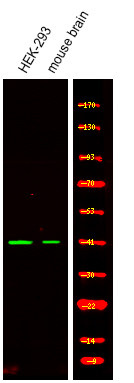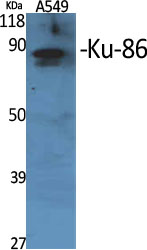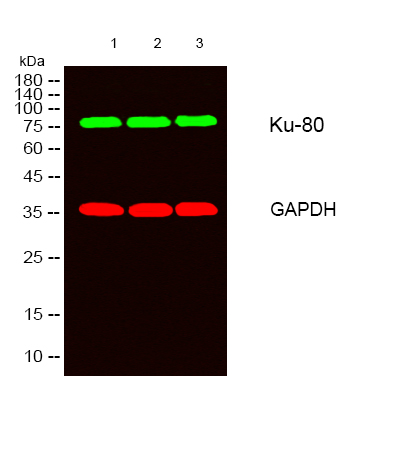Ataxin-3 (Phospho Ser256) rabbit pAb
- Catalog No.:YP1766
- Applications:WB
- Reactivity:Human;Mouse;Rat
- Target:
- Ataxin-3
- Fields:
- >>Protein processing in endoplasmic reticulum;>>Spinocerebellar ataxia;>>Pathways of neurodegeneration - multiple diseases
- Gene Name:
- ATXN3 ATX3 MJD MJD1 SCA3
- Protein Name:
- Ataxin-3 (Phospho-Ser256)
- Human Gene Id:
- 4287
- Human Swiss Prot No:
- P54252
- Mouse Gene Id:
- 110616
- Mouse Swiss Prot No:
- Q9CVD2
- Rat Gene Id:
- 60331
- Rat Swiss Prot No:
- O35815
- Immunogen:
- Synthesized peptide derived from human Ataxin-3 (Phospho-Ser256)
- Specificity:
- This antibody detects endogenous levels of Ataxin-3 (Phospho-Ser256) at Human, Mouse,Rat
- Formulation:
- Liquid in PBS containing 50% glycerol, 0.5% BSA and 0.02% sodium azide.
- Source:
- Polyclonal, Rabbit,IgG
- Dilution:
- WB 1:500-2000
- Purification:
- The antibody was affinity-purified from rabbit serum by affinity-chromatography using specific immunogen.
- Concentration:
- 1 mg/ml
- Storage Stability:
- -15°C to -25°C/1 year(Do not lower than -25°C)
- Other Name:
- Ataxin-3 (EC 3.4.19.12) (Machado-Joseph disease protein 1) (Spinocerebellar ataxia type 3 protein)
- Molecular Weight(Da):
- 40kD
- Background:
- ataxin 3(ATXN3) Homo sapiens Machado-Joseph disease, also known as spinocerebellar ataxia-3, is an autosomal dominant neurologic disorder. The protein encoded by this gene contains (CAG)n repeats in the coding region, and the expansion of these repeats from the normal 12-44 to 52-86 is one cause of Machado-Joseph disease. There is a negative correlation between the age of onset and CAG repeat numbers. Alternatively spliced transcript variants encoding different isoforms have been described for this gene. [provided by RefSeq, Jul 2016],
- Function:
- disease:Defects in ATXN3 are the cause of spinocerebellar ataxia type 3 (SCA3) [MIM:109150]; also known as Machado-Joseph disease (MJD). Spinocerebellar ataxia is a clinically and genetically heterogeneous group of cerebellar disorders. Patients show progressive incoordination of gait and often poor coordination of hands, speech and eye movements, due to degeneration of the cerebellum with variable involvement of the brainstem and spinal cord. SCA3 belongs to the autosomal dominant cerebellar ataxias type I (ADCA I) which are characterized by cerebellar ataxia in combination with additional clinical features like optic atrophy, ophthalmoplegia, bulbar and extrapyramidal signs, peripheral neuropathy and dementia. The molecular defect in SCA3 is the a CAG repeat expansion in ATX3 coding region. Longer expansions result in earlier onset and more severe clinical manifestations of the disease
- Subcellular Location:
- Nucleus matrix . Nucleus . Predominantly nuclear, but not exclusively, inner nuclear matrix.
- Expression:
- Ubiquitous.
- June 19-2018
- WESTERN IMMUNOBLOTTING PROTOCOL
- June 19-2018
- IMMUNOHISTOCHEMISTRY-PARAFFIN PROTOCOL
- June 19-2018
- IMMUNOFLUORESCENCE PROTOCOL
- September 08-2020
- FLOW-CYTOMEYRT-PROTOCOL
- May 20-2022
- Cell-Based ELISA│解您多样本WB检测之困扰
- July 13-2018
- CELL-BASED-ELISA-PROTOCOL-FOR-ACETYL-PROTEIN
- July 13-2018
- CELL-BASED-ELISA-PROTOCOL-FOR-PHOSPHO-PROTEIN
- July 13-2018
- Antibody-FAQs
- Products Images

- Western Blot analysis of various,using primary antibody at 1:1000 dilution. Secondary antibody(catalog#:RS23920) was diluted at 1:10000

